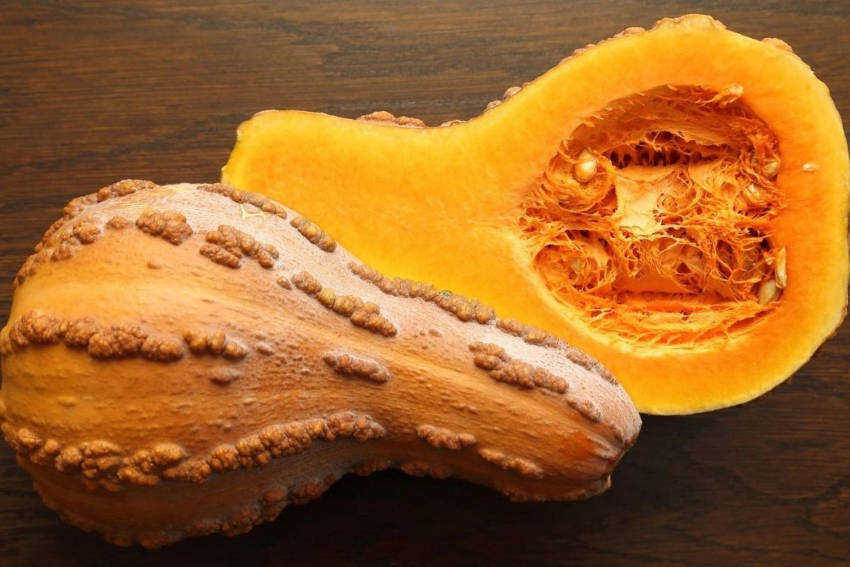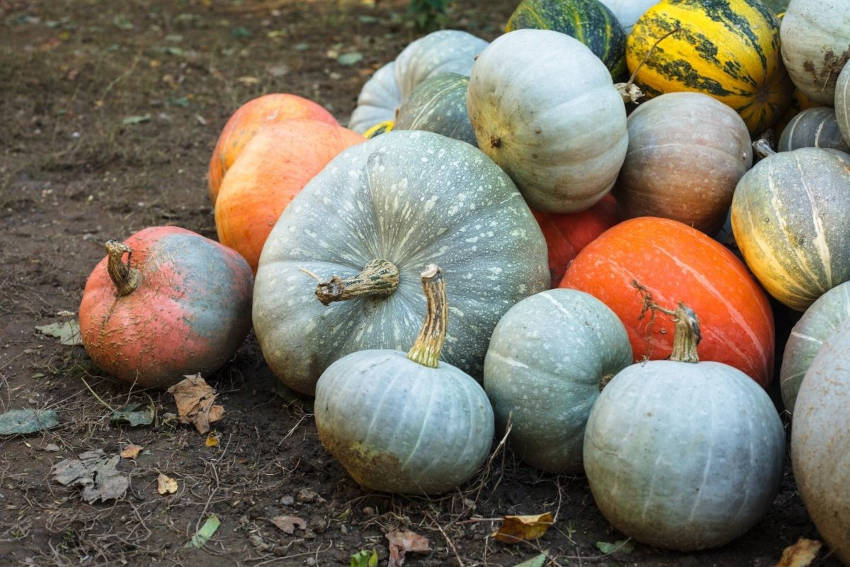Heirloom pumpkins and winter squash come in all shapes, colours and textures, making them both decorative and productive features in the garden. With fabulously warted skin, exotic colouring and unusual shapes, many heirloom varieties also have origin stories to match their evocative names. Why not grow a little history in your veggie patch?
‘Pumpkin’ or ‘Winter Squash’?
Three botanical species produce fruit that are variously called pumpkins, winter squash, summer squash and gourds: Curcubita maxima, C. moschata and C. pepo. The species are distinguished by the spikiness of their vines and leaves, the shape of their stems and the colour of their seeds rather than their fruit. Luckily for gardeners, all three species have the same growing requirements, producing fruit over the warmest months of the year.
The distinction between pumpkins and winter squash is based more on local convention than botany. Both vegetables grow as sprawling vines and produce fruit with thicker skin than summer squash, and both can be stored for future consumption. But often what is called a pumpkin in one part of the world will be called a winter squash in another.
What Makes an ‘Heirloom’ Pumpkin?
Pumpkins and winter squash have a long and interesting history in cultivation stretching back to their origins in Central America about 7500 years ago. Columbus took pumpkin seeds to Europe, and they were also grown by north american first nations people and early American settlers. Since that time, varieties have been developed and grown in many parts of the world. So how do you know if you’re growing a true heirloom?
There’s no single definition of what makes a particular vegetable an heirloom. For some people, a variety that’s passed down through generations of gardeners is enough to qualify it as an heirloom. For others, more stringent criteria apply. Generally, heirloom seed must be open pollinated (not hybrid), not genetically modified, and have been bred through traditional breeding practices such as saving the best seeds over generations.
Varieties must also have been around for some time to be considered heirlooms. The length of time is up for dispute, though, with some gardeners believing that heirlooms must be at least 50 or 100 years old, while others say varieties must have been introduced before specific dates such as the end of World War II. Learn more here.
Favourite Varieties
Here are some of our favourite pumpkin and squash varieties that have made their way to Australian shores.
Pumpkin
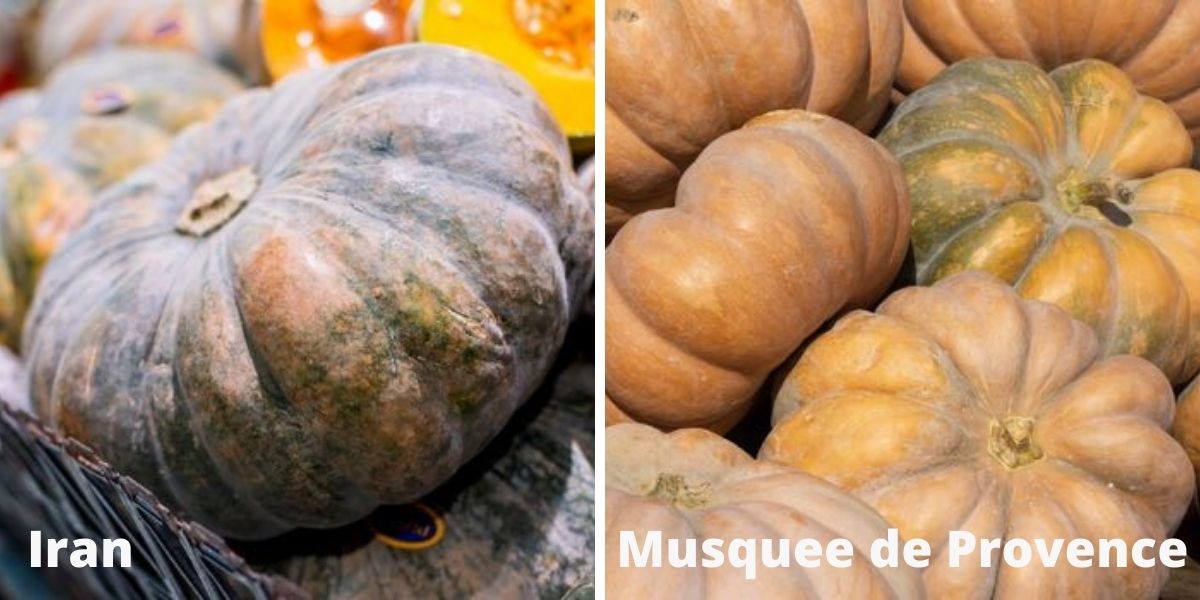
Iran: Originally from the northeastern Iranian city of Torbate-Heydariyeh, this long-storing variety is also grown in the US and across the Caribbean. This widespread dispersion has given rise to numerous alternative names, including 'Calabaza' or 'Calabassa', 'Auyama', 'Ayote' and 'West Indian Pumpkin'. The large pumpkins have a silver-grey skin, sometimes mixed with salmon pink. Seeds of this variety have been stored in the USDA seed back since 1940.
Musquee de Provence: A large, flattened pumpkin originating in the Provence region of southern France, this variety is also known as ‘Fairytale’ pumpkin for obvious reasons. The variety was developed in the 19th century and introduced to the US in 1899. It's often seen for sale in French markets. The ribbed dark green skin ripens to a terracotta tan colour.
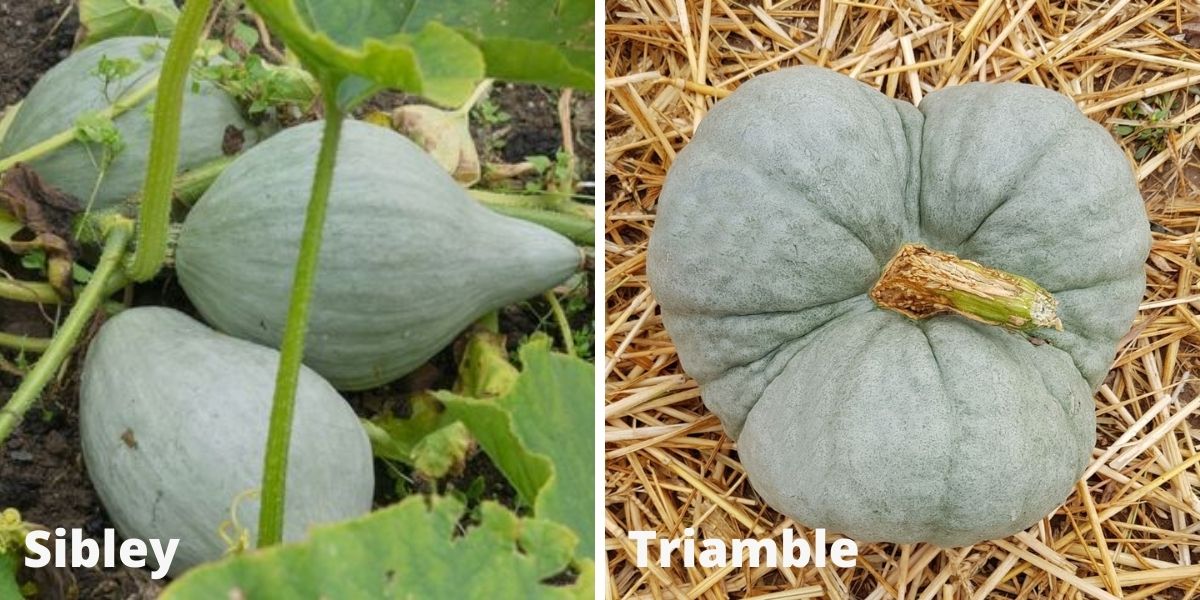
Sibley: An American variety originally grown by first nations people in the Missouri River watershed. Seed was grown in Iowa by home gardener Mrs Van Dinam from around 1840, and sold commercially in 1887 by Hiram Sibley & Co. The torpedo shaped fruit has firm orange flesh and the seeds are brown. The variety is also known as ‘Pike’s Peak’.
Triamble: A ‘rescued’ Australian heirloom variety that was nearly lost to cultivation. It’s thought that ‘Triamble’ was grown from early in Australia’s colonial history. Seeds were listed in Australian catalogues in 1918, and were exported to the US by Arthur Yates & Co. in 1932. The variety went out of favour for some time before being reintroduced in recent decades. The distinctive three-lobed fruit has slate blue skin and firm orange flesh with a sweet, nutty flavour.
Winter Squash
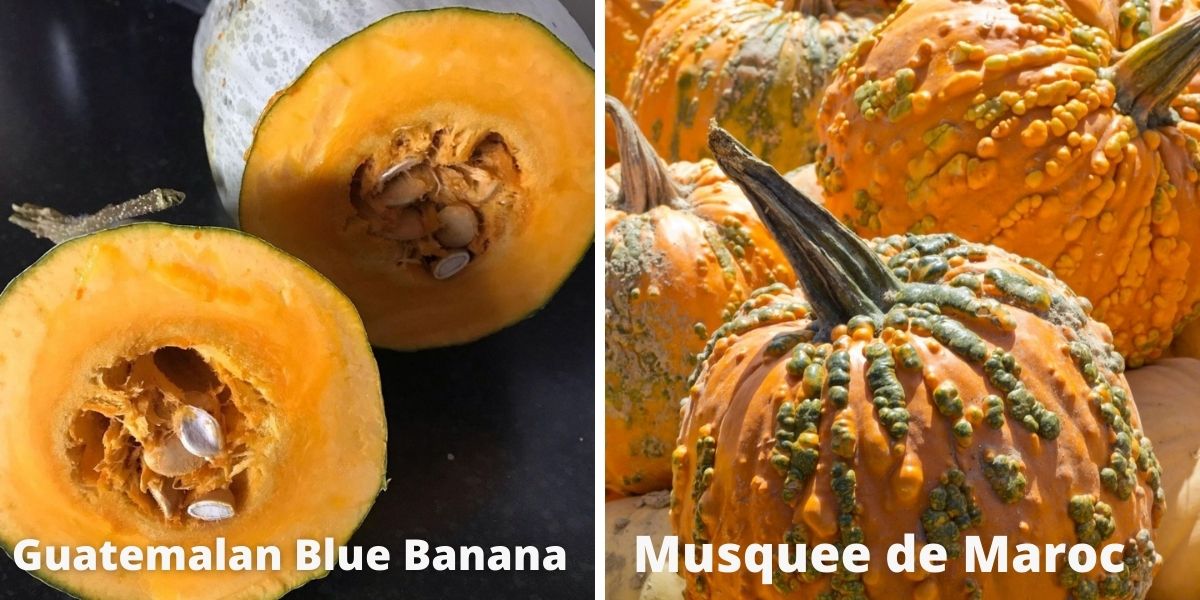
Guatemalan Blue Banana: A rare variety that’s indigenous to Central and South America, then introduced to the United States. Highly productive vines grow long, cylindrical fruit with dark blue skin marked with lighter stripes up to 50cm long. While this variety is not grown commercially, it is valued by home gardeners for its fast growth, high yields and long storage time.
Musquee de Maroc: A variety grown commercially in Morocco and recently introduced to cultivation in America, where they are often grown for their ornamental value. The large fruit have terracotta coloured skin ripening to shades of green, brown and blue, with prominent warts often in a contrasting colour. This variety is also known as 'Muscat de Maroc’.
Other heirloom winter squash to try include North Georgia Candy Roaster, Delicata and Vegetable Spaghetti. See all pumpkin and winter squash varieties here.
